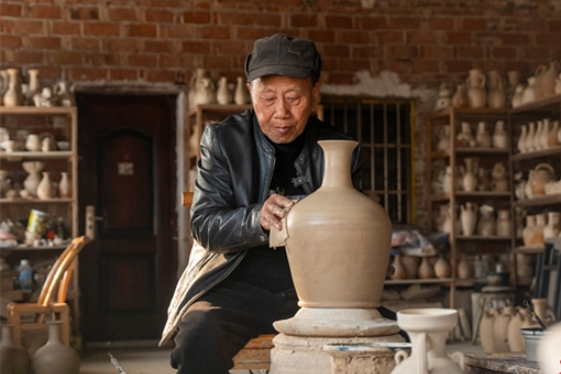Tourists visit the Hunan Garden at the Beijing International Horticultural Exhibition in Beijing, capital of China, July 7, 2019. Located in central China, Hunan Province is well-known for its varied topography. It abuts the Dongting Lake to the north, and the east, south and west sides of the province are surrounded by mountains, with Wuling and Xuefeng Mountains to the west, Nanling Mountain to the south, Luoxiao and Mufu Mountains to the east. The Xiangjiang, Zijiang, Yuanjiang and Lishui Rivers converge on the Yangtze River at the Dongting Lake in the northern Hunan. In recent years, Hunan Province has been committed to promoting ecological development and reinforcing the overall governance of ecosystem composed mainly of mountains, rivers, lakes, forests and fields, in a bid to ensure blue skies and clean water and soil, as well as to create a beautiful landscape along the Yangtze River. Wulingyuan, a UNESCO World Heritage Site in the Wuling Mountain Range, houses more than 3,000 quartzite sandstone pillars and peaks, many over 200 meters in height, along countless ravines, rivers and waterfalls. Zhangjiajie, a picturesque tourist spot widely noted for its natural landscapes and cultural beauties in Hunan, has been dedicated over the years to developing tourism industry coordinated with agriculture, forestry, culture and sports. Represented by Zhangjiajie, Hunan is home to 23 national and 30 provincial nature reserves. Green development has become a highlight in the province as the forest coverage stands at 59.82 percent and good air quality days for 14 cities and prefectures of the province accounted for 85.4 percent last year. The "Hunan Day" event kicked off on Sunday at the Beijing International Horticultural Exhibition. Visitors can tour the Hunan Garden to explore its magnificent nature and multiple cultural facets. (Xinhua/Ren Chao) Aerial photo taken on May 31, 2019 shows a view of the Tianmen Mountain Scenic Area in Zhangjiajie, central China's Hunan Province. Located in central China, Hunan Province is well-known for its varied topography. It abuts the Dongting Lake to the north, and the east, south and west sides of the province are surrounded by mountains, with Wuling and Xuefeng Mountains to the west, Nanling Mountain to the south, Luoxiao and Mufu Mountains to the east. The Xiangjiang, Zijiang, Yuanjiang and Lishui Rivers converge on the Yangtze River at the Dongting Lake in the northern Hunan. In recent years, Hunan Province has been committed to promoting ecological development and reinforcing the overall governance of ecosystem composed mainly of mountains, rivers, lakes, forests and fields, in a bid to ensure blue skies and clean water and soil, as well as to create a beautiful landscape along the Yangtze River. Wulingyuan, a UNESCO World Heritage Site in the Wuling Mountain Range, houses more than 3,000 quartzite sandstone pillars and peaks, many over 200 meters in height, along countless ravines, rivers and waterfalls. Zhangjiajie, a picturesque tourist spot widely noted for its natural landscapes and cultural beauties in Hunan, has been dedicated over the years to developing tourism industry coordinated with agriculture, forestry, culture and sports. Represented by Zhangjiajie, Hunan is home to 23 national and 30 provincial nature reserves. Green development has become a highlight in the province as the forest coverage stands at 59.82 percent and good air quality days for 14 cities and prefectures of the province accounted for 85.4 percent last year. The "Hunan Day" event kicked off on Sunday at the Beijing International Horticultural Exhibition. Visitors can tour the Hunan Garden to explore its magnificent nature and multiple cultural facets. (Xinhua/Xue Yuge) Tourists view cherry blossoms at the Hunan Forest Botanical Garden in Changsha, capital of central China's Hunan Province, March 25, 2019. Located in central China, Hunan Province is well-known for its varied topography. It abuts the Dongting Lake to the north, and the east, south and west sides of the province are surrounded by mountains, with Wuling and Xuefeng Mountains to the west, Nanling Mountain to the south, Luoxiao and Mufu Mountains to the east. The Xiangjiang, Zijiang, Yuanjiang and Lishui Rivers converge on the Yangtze River at the Dongting Lake in the northern Hunan. In recent years, Hunan Province has been committed to promoting ecological development and reinforcing the overall governance of ecosystem composed mainly of mountains, rivers, lakes, forests and fields, in a bid to ensure blue skies and clean water and soil, as well as to create a beautiful landscape along the Yangtze River. Wulingyuan, a UNESCO World Heritage Site in the Wuling Mountain Range, houses more than 3,000 quartzite sandstone pillars and peaks, many over 200 meters in height, along countless ravines, rivers and waterfalls. Zhangjiajie, a picturesque tourist spot widely noted for its natural landscapes and cultural beauties in Hunan, has been dedicated over the years to developing tourism industry coordinated with agriculture, forestry, culture and sports. Represented by Zhangjiajie, Hunan is home to 23 national and 30 provincial nature reserves. Green development has become a highlight in the province as the forest coverage stands at 59.82 percent and good air quality days for 14 cities and prefectures of the province accounted for 85.4 percent last year. The "Hunan Day" event kicked off on Sunday at the Beijing International Horticultural Exhibition. Visitors can tour the Hunan Garden to explore its magnificent nature and multiple cultural facets. (Xinhua/Xue Yuge) Tourists visit the Hunan Garden at the Beijing International Horticultural Exhibition in Beijing, capital of China, July 7, 2019. Located in central China, Hunan Province is well-known for its varied topography. It abuts the Dongting Lake to the north, and the east, south and west sides of the province are surrounded by mountains, with Wuling and Xuefeng Mountains to the west, Nanling Mountain to the south, Luoxiao and Mufu Mountains to the east. The Xiangjiang, Zijiang, Yuanjiang and Lishui Rivers converge on the Yangtze River at the Dongting Lake in the northern Hunan. In recent years, Hunan Province has been committed to promoting ecological development and reinforcing the overall governance of ecosystem composed mainly of mountains, rivers, lakes, forests and fields, in a bid to ensure blue skies and clean water and soil, as well as to create a beautiful landscape along the Yangtze River. Wulingyuan, a UNESCO World Heritage Site in the Wuling Mountain Range, houses more than 3,000 quartzite sandstone pillars and peaks, many over 200 meters in height, along countless ravines, rivers and waterfalls. Zhangjiajie, a picturesque tourist spot widely noted for its natural landscapes and cultural beauties in Hunan, has been dedicated over the years to developing tourism industry coordinated with agriculture, forestry, culture and sports. Represented by Zhangjiajie, Hunan is home to 23 national and 30 provincial nature reserves. Green development has become a highlight in the province as the forest coverage stands at 59.82 percent and good air quality days for 14 cities and prefectures of the province accounted for 85.4 percent last year. The "Hunan Day" event kicked off on Sunday at the Beijing International Horticultural Exhibition. Visitors can tour the Hunan Garden to explore its magnificent nature and multiple cultural facets. (Xinhua/Ren Chao) Photo taken on June 1, 2019 shows the 326-meter-high Bailong Elevator, the world's highest outdoor elevator, at the Wulingyuan Scenic Area in Zhangjiajie, central China's Hunan Province. Located in central China, Hunan Province is well-known for its varied topography. It abuts the Dongting Lake to the north, and the east, south and west sides of the province are surrounded by mountains, with Wuling and Xuefeng Mountains to the west, Nanling Mountain to the south, Luoxiao and Mufu Mountains to the east. The Xiangjiang, Zijiang, Yuanjiang and Lishui Rivers converge on the Yangtze River at the Dongting Lake in the northern Hunan. In recent years, Hunan Province has been committed to promoting ecological development and reinforcing the overall governance of ecosystem composed mainly of mountains, rivers, lakes, forests and fields, in a bid to ensure blue skies and clean water and soil, as well as to create a beautiful landscape along the Yangtze River. Wulingyuan, a UNESCO World Heritage Site in the Wuling Mountain Range, houses more than 3,000 quartzite sandstone pillars and peaks, many over 200 meters in height, along countless ravines, rivers and waterfalls. Zhangjiajie, a picturesque tourist spot widely noted for its natural landscapes and cultural beauties in Hunan, has been dedicated over the years to developing tourism industry coordinated with agriculture, forestry, culture and sports. Represented by Zhangjiajie, Hunan is home to 23 national and 30 provincial nature reserves. Green development has become a highlight in the province as the forest coverage stands at 59.82 percent and good air quality days for 14 cities and prefectures of the province accounted for 85.4 percent last year. The "Hunan Day" event kicked off on Sunday at the Beijing International Horticultural Exhibition. Visitors can tour the Hunan Garden to explore its magnificent nature and multiple cultural facets. (Xinhua/Xue Yuge) Aerial photo taken on June 1, 2019 shows a view of the Baofeng Lake in the Wulingyuan Scenic Area in Zhangjiajie, central China's Hunan Province. Located in central China, Hunan Province is well-known for its varied topography. It abuts the Dongting Lake to the north, and the east, south and west sides of the province are surrounded by mountains, with Wuling and Xuefeng Mountains to the west, Nanling Mountain to the south, Luoxiao and Mufu Mountains to the east. The Xiangjiang, Zijiang, Yuanjiang and Lishui Rivers converge on the Yangtze River at the Dongting Lake in the northern Hunan. In recent years, Hunan Province has been committed to promoting ecological development and reinforcing the overall governance of ecosystem composed mainly of mountains, rivers, lakes, forests and fields, in a bid to ensure blue skies and clean water and soil, as well as to create a beautiful landscape along the Yangtze River. Wulingyuan, a UNESCO World Heritage Site in the Wuling Mountain Range, houses more than 3,000 quartzite sandstone pillars and peaks, many over 200 meters in height, along countless ravines, rivers and waterfalls. Zhangjiajie, a picturesque tourist spot widely noted for its natural landscapes and cultural beauties in Hunan, has been dedicated over the years to developing tourism industry coordinated with agriculture, forestry, culture and sports. Represented by Zhangjiajie, Hunan is home to 23 national and 30 provincial nature reserves. Green development has become a highlight in the province as the forest coverage stands at 59.82 percent and good air quality days for 14 cities and prefectures of the province accounted for 85.4 percent last year. The "Hunan Day" event kicked off on Sunday at the Beijing International Horticultural Exhibition. Visitors can tour the Hunan Garden to explore its magnificent nature and multiple cultural facets. (Xinhua/Xue Yuge) Little swans are seen in the Dongdongtinghu State-level Nature Reserve in central China's Hunan Province March 1, 2017. Located in central China, Hunan Province is well-known for its varied topography. It abuts the Dongting Lake to the north, and the east, south and west sides of the province are surrounded by mountains, with Wuling and Xuefeng Mountains to the west, Nanling Mountain to the south, Luoxiao and Mufu Mountains to the east. The Xiangjiang, Zijiang, Yuanjiang and Lishui Rivers converge on the Yangtze River at the Dongting Lake in the northern Hunan. In recent years, Hunan Province has been committed to promoting ecological development and reinforcing the overall governance of ecosystem composed mainly of mountains, rivers, lakes, forests and fields, in a bid to ensure blue skies and clean water and soil, as well as to create a beautiful landscape along the Yangtze River. Wulingyuan, a UNESCO World Heritage Site in the Wuling Mountain Range, houses more than 3,000 quartzite sandstone pillars and peaks, many over 200 meters in height, along countless ravines, rivers and waterfalls. Zhangjiajie, a picturesque tourist spot widely noted for its natural landscapes and cultural beauties in Hunan, has been dedicated over the years to developing tourism industry coordinated with agriculture, forestry, culture and sports. Represented by Zhangjiajie, Hunan is home to 23 national and 30 provincial nature reserves. Green development has become a highlight in the province as the forest coverage stands at 59.82 percent and good air quality days for 14 cities and prefectures of the province accounted for 85.4 percent last year. The "Hunan Day" event kicked off on Sunday at the Beijing International Horticultural Exhibition. Visitors can tour the Hunan Garden to explore its magnificent nature and multiple cultural facets. (Xinhua/Li Ga) Aerial photo taken on July 15, 2017 shows the Juzizhou Islet in the Xiangjiang River in Changsha, capital of central China's Hunan Province. Located in central China, Hunan Province is well-known for its varied topography. It abuts the Dongting Lake to the north, and the east, south and west sides of the province are surrounded by mountains, with Wuling and Xuefeng Mountains to the west, Nanling Mountain to the south, Luoxiao and Mufu Mountains to the east. The Xiangjiang, Zijiang, Yuanjiang and Lishui Rivers converge on the Yangtze River at the Dongting Lake in the northern Hunan. In recent years, Hunan Province has been committed to promoting ecological development and reinforcing the overall governance of ecosystem composed mainly of mountains, rivers, lakes, forests and fields, in a bid to ensure blue skies and clean water and soil, as well as to create a beautiful landscape along the Yangtze River. Wulingyuan, a UNESCO World Heritage Site in the Wuling Mountain Range, houses more than 3,000 quartzite sandstone pillars and peaks, many over 200 meters in height, along countless ravines, rivers and waterfalls. Zhangjiajie, a picturesque tourist spot widely noted for its natural landscapes and cultural beauties in Hunan, has been dedicated over the years to developing tourism industry coordinated with agriculture, forestry, culture and sports. Represented by Zhangjiajie, Hunan is home to 23 national and 30 provincial nature reserves. Green development has become a highlight in the province as the forest coverage stands at 59.82 percent and good air quality days for 14 cities and prefectures of the province accounted for 85.4 percent last year. The "Hunan Day" event kicked off on Sunday at the Beijing International Horticultural Exhibition. Visitors can tour the Hunan Garden to explore its magnificent nature and multiple cultural facets. (Xinhua/Long Hongtao) Aerial photo taken on April 16, 2019 shows a spring scenery on the bank of Lianxi River in Daoxian County, central China's Hunan Province. Located in central China, Hunan Province is well-known for its varied topography. It abuts the Dongting Lake to the north, and the east, south and west sides of the province are surrounded by mountains, with Wuling and Xuefeng Mountains to the west, Nanling Mountain to the south, Luoxiao and Mufu Mountains to the east. The Xiangjiang, Zijiang, Yuanjiang and Lishui Rivers converge on the Yangtze River at the Dongting Lake in the northern Hunan. In recent years, Hunan Province has been committed to promoting ecological development and reinforcing the overall governance of ecosystem composed mainly of mountains, rivers, lakes, forests and fields, in a bid to ensure blue skies and clean water and soil, as well as to create a beautiful landscape along the Yangtze River. Wulingyuan, a UNESCO World Heritage Site in the Wuling Mountain Range, houses more than 3,000 quartzite sandstone pillars and peaks, many over 200 meters in height, along countless ravines, rivers and waterfalls. Zhangjiajie, a picturesque tourist spot widely noted for its natural landscapes and cultural beauties in Hunan, has been dedicated over the years to developing tourism industry coordinated with agriculture, forestry, culture and sports. Represented by Zhangjiajie, Hunan is home to 23 national and 30 provincial nature reserves. Green development has become a highlight in the province as the forest coverage stands at 59.82 percent and good air quality days for 14 cities and prefectures of the province accounted for 85.4 percent last year. The "Hunan Day" event kicked off on Sunday at the Beijing International Horticultural Exhibition. Visitors can tour the Hunan Garden to explore its magnificent nature and multiple cultural facets. (Photo by He Hongfu/Xinhua) Aerial photo taken on June 4, 2016 shows the Yueyang Tower along the riverside of the Dongting Lake in Yueyang, central China's Hunan Province. Located in central China, Hunan Province is well-known for its varied topography. It abuts the Dongting Lake to the north, and the east, south and west sides of the province are surrounded by mountains, with Wuling and Xuefeng Mountains to the west, Nanling Mountain to the south, Luoxiao and Mufu Mountains to the east. The Xiangjiang, Zijiang, Yuanjiang and Lishui Rivers converge on the Yangtze River at the Dongting Lake in the northern Hunan. In recent years, Hunan Province has been committed to promoting ecological development and reinforcing the overall governance of ecosystem composed mainly of mountains, rivers, lakes, forests and fields, in a bid to ensure blue skies and clean water and soil, as well as to create a beautiful landscape along the Yangtze River. Wulingyuan, a UNESCO World Heritage Site in the Wuling Mountain Range, houses more than 3,000 quartzite sandstone pillars and peaks, many over 200 meters in height, along countless ravines, rivers and waterfalls. Zhangjiajie, a picturesque tourist spot widely noted for its natural landscapes and cultural beauties in Hunan, has been dedicated over the years to developing tourism industry coordinated with agriculture, forestry, culture and sports. Represented by Zhangjiajie, Hunan is home to 23 national and 30 provincial nature reserves. Green development has become a highlight in the province as the forest coverage stands at 59.82 percent and good air quality days for 14 cities and prefectures of the province accounted for 85.4 percent last year. The "Hunan Day" event kicked off on Sunday at the Beijing International Horticultural Exhibition. Visitors can tour the Hunan Garden to explore its magnificent nature and multiple cultural facets. (Xinhua/Li Ga) Aerial photo taken on Nov. 25, 2018 shows a yacht sailing on the Nianjia Lake at the Martyrs Park in Changsha, capital of central China's Hunan Province. Located in central China, Hunan Province is well-known for its varied topography. It abuts the Dongting Lake to the north, and the east, south and west sides of the province are surrounded by mountains, with Wuling and Xuefeng Mountains to the west, Nanling Mountain to the south, Luoxiao and Mufu Mountains to the east. The Xiangjiang, Zijiang, Yuanjiang and Lishui Rivers converge on the Yangtze River at the Dongting Lake in the northern Hunan. In recent years, Hunan Province has been committed to promoting ecological development and reinforcing the overall governance of ecosystem composed mainly of mountains, rivers, lakes, forests and fields, in a bid to ensure blue skies and clean water and soil, as well as to create a beautiful landscape along the Yangtze River. Wulingyuan, a UNESCO World Heritage Site in the Wuling Mountain Range, houses more than 3,000 quartzite sandstone pillars and peaks, many over 200 meters in height, along countless ravines, rivers and waterfalls. Zhangjiajie, a picturesque tourist spot widely noted for its natural landscapes and cultural beauties in Hunan, has been dedicated over the years to developing tourism industry coordinated with agriculture, forestry, culture and sports. Represented by Zhangjiajie, Hunan is home to 23 national and 30 provincial nature reserves. Green development has become a highlight in the province as the forest coverage stands at 59.82 percent and good air quality days for 14 cities and prefectures of the province accounted for 85.4 percent last year. The "Hunan Day" event kicked off on Sunday at the Beijing International Horticultural Exhibition. Visitors can tour the Hunan Garden to explore its magnificent nature and multiple cultural facets. (Xinhua/Li Ga) Nicholi Rogatkin from the United States competes during the 2nd Red Bull Sky Gate race held in Zhangjiajie, central China's Hunan Province, July 16, 2016. Located in central China, Hunan Province is well-known for its varied topography. It abuts the Dongting Lake to the north, and the east, south and west sides of the province are surrounded by mountains, with Wuling and Xuefeng Mountains to the west, Nanling Mountain to the south, Luoxiao and Mufu Mountains to the east. The Xiangjiang, Zijiang, Yuanjiang and Lishui Rivers converge on the Yangtze River at the Dongting Lake in the northern Hunan. In recent years, Hunan Province has been committed to promoting ecological development and reinforcing the overall governance of ecosystem composed mainly of mountains, rivers, lakes, forests and fields, in a bid to ensure blue skies and clean water and soil, as well as to create a beautiful landscape along the Yangtze River. Wulingyuan, a UNESCO World Heritage Site in the Wuling Mountain Range, houses more than 3,000 quartzite sandstone pillars and peaks, many over 200 meters in height, along countless ravines, rivers and waterfalls. Zhangjiajie, a picturesque tourist spot widely noted for its natural landscapes and cultural beauties in Hunan, has been dedicated over the years to developing tourism industry coordinated with agriculture, forestry, culture and sports. Represented by Zhangjiajie, Hunan is home to 23 national and 30 provincial nature reserves. Green development has become a highlight in the province as the forest coverage stands at 59.82 percent and good air quality days for 14 cities and prefectures of the province accounted for 85.4 percent last year. The "Hunan Day" event kicked off on Sunday at the Beijing International Horticultural Exhibition. Visitors can tour the Hunan Garden to explore its magnificent nature and multiple cultural facets. (Xinhua/Liu Dawei) Aerial photo taken on June 3, 2019 shows people participating in a dragon boat race held on the Xiaoshui River in Daoxian County, central China's Hunan Province. Located in central China, Hunan Province is well-known for its varied topography. It abuts the Dongting Lake to the north, and the east, south and west sides of the province are surrounded by mountains, with Wuling and Xuefeng Mountains to the west, Nanling Mountain to the south, Luoxiao and Mufu Mountains to the east. The Xiangjiang, Zijiang, Yuanjiang and Lishui Rivers converge on the Yangtze River at the Dongting Lake in the northern Hunan. In recent years, Hunan Province has been committed to promoting ecological development and reinforcing the overall governance of ecosystem composed mainly of mountains, rivers, lakes, forests and fields, in a bid to ensure blue skies and clean water and soil, as well as to create a beautiful landscape along the Yangtze River. Wulingyuan, a UNESCO World Heritage Site in the Wuling Mountain Range, houses more than 3,000 quartzite sandstone pillars and peaks, many over 200 meters in height, along countless ravines, rivers and waterfalls. Zhangjiajie, a picturesque tourist spot widely noted for its natural landscapes and cultural beauties in Hunan, has been dedicated over the years to developing tourism industry coordinated with agriculture, forestry, culture and sports. Represented by Zhangjiajie, Hunan is home to 23 national and 30 provincial nature reserves. Green development has become a highlight in the province as the forest coverage stands at 59.82 percent and good air quality days for 14 cities and prefectures of the province accounted for 85.4 percent last year. The "Hunan Day" event kicked off on Sunday at the Beijing International Horticultural Exhibition. Visitors can tour the Hunan Garden to explore its magnificent nature and multiple cultural facets. (Photo by He Hongfu/Xinhua) Aerial photo taken on June 6, 2019 shows people of the Tujia ethnic group dancing to celebrate the Sheba Day in Xichehe Town of Longshan County, central China's Hunan Province. Located in central China, Hunan Province is well-known for its varied topography. It abuts the Dongting Lake to the north, and the east, south and west sides of the province are surrounded by mountains, with Wuling and Xuefeng Mountains to the west, Nanling Mountain to the south, Luoxiao and Mufu Mountains to the east. The Xiangjiang, Zijiang, Yuanjiang and Lishui Rivers converge on the Yangtze River at the Dongting Lake in the northern Hunan. In recent years, Hunan Province has been committed to promoting ecological development and reinforcing the overall governance of ecosystem composed mainly of mountains, rivers, lakes, forests and fields, in a bid to ensure blue skies and clean water and soil, as well as to create a beautiful landscape along the Yangtze River. Wulingyuan, a UNESCO World Heritage Site in the Wuling Mountain Range, houses more than 3,000 quartzite sandstone pillars and peaks, many over 200 meters in height, along countless ravines, rivers and waterfalls. Zhangjiajie, a picturesque tourist spot widely noted for its natural landscapes and cultural beauties in Hunan, has been dedicated over the years to developing tourism industry coordinated with agriculture, forestry, culture and sports. Represented by Zhangjiajie, Hunan is home to 23 national and 30 provincial nature reserves. Green development has become a highlight in the province as the forest coverage stands at 59.82 percent and good air quality days for 14 cities and prefectures of the province accounted for 85.4 percent last year. The "Hunan Day" event kicked off on Sunday at the Beijing International Horticultural Exhibition. Visitors can tour the Hunan Garden to explore its magnificent nature and multiple cultural facets. (Xinhua/Xue Yuge) Aerial photo taken on Jan. 10, 2019 shows a view of the Fenghuang ancient town in Fenghuang County, central China's Hunan Province. Located in central China, Hunan Province is well-known for its varied topography. It abuts the Dongting Lake to the north, and the east, south and west sides of the province are surrounded by mountains, with Wuling and Xuefeng Mountains to the west, Nanling Mountain to the south, Luoxiao and Mufu Mountains to the east. The Xiangjiang, Zijiang, Yuanjiang and Lishui Rivers converge on the Yangtze River at the Dongting Lake in the northern Hunan. In recent years, Hunan Province has been committed to promoting ecological development and reinforcing the overall governance of ecosystem composed mainly of mountains, rivers, lakes, forests and fields, in a bid to ensure blue skies and clean water and soil, as well as to create a beautiful landscape along the Yangtze River. Wulingyuan, a UNESCO World Heritage Site in the Wuling Mountain Range, houses more than 3,000 quartzite sandstone pillars and peaks, many over 200 meters in height, along countless ravines, rivers and waterfalls. Zhangjiajie, a picturesque tourist spot widely noted for its natural landscapes and cultural beauties in Hunan, has been dedicated over the years to developing tourism industry coordinated with agriculture, forestry, culture and sports. Represented by Zhangjiajie, Hunan is home to 23 national and 30 provincial nature reserves. Green development has become a highlight in the province as the forest coverage stands at 59.82 percent and good air quality days for 14 cities and prefectures of the province accounted for 85.4 percent last year. The "Hunan Day" event kicked off on Sunday at the Beijing International Horticultural Exhibition. Visitors can tour the Hunan Garden to explore its magnificent nature and multiple cultural facets. (Photo by Chen Zeguo/Xinhua) [NextPage] Aerial photo taken on May 26, 2019 shows a view of the Wulingyuan Scenic Area in Zhangjiajie, central China's Hunan Province. Located in central China, Hunan Province is well-known for its varied topography. It abuts the Dongting Lake to the north, and the east, south and west sides of the province are surrounded by mountains, with Wuling and Xuefeng Mountains to the west, Nanling Mountain to the south, Luoxiao and Mufu Mountains to the east. The Xiangjiang, Zijiang, Yuanjiang and Lishui Rivers converge on the Yangtze River at the Dongting Lake in the northern Hunan. In recent years, Hunan Province has been committed to promoting ecological development and reinforcing the overall governance of ecosystem composed mainly of mountains, rivers, lakes, forests and fields, in a bid to ensure blue skies and clean water and soil, as well as to create a beautiful landscape along the Yangtze River. Wulingyuan, a UNESCO World Heritage Site in the Wuling Mountain Range, houses more than 3,000 quartzite sandstone pillars and peaks, many over 200 meters in height, along countless ravines, rivers and waterfalls. Zhangjiajie, a picturesque tourist spot widely noted for its natural landscapes and cultural beauties in Hunan, has been dedicated over the years to developing tourism industry coordinated with agriculture, forestry, culture and sports. Represented by Zhangjiajie, Hunan is home to 23 national and 30 provincial nature reserves. Green development has become a highlight in the province as the forest coverage stands at 59.82 percent and good air quality days for 14 cities and prefectures of the province accounted for 85.4 percent last year. The "Hunan Day" event kicked off on Sunday at the Beijing International Horticultural Exhibition. Visitors can tour the Hunan Garden to explore its magnificent nature and multiple cultural facets. (Photo by Wu Rongbing/Xinhua) Aerial photo taken on Nov. 8, 2017 shows a residential dwelling cluster at Shibadong Village of Huayuan County, central China's Hunan Province. Located in central China, Hunan Province is well-known for its varied topography. It abuts the Dongting Lake to the north, and the east, south and west sides of the province are surrounded by mountains, with Wuling and Xuefeng Mountains to the west, Nanling Mountain to the south, Luoxiao and Mufu Mountains to the east. The Xiangjiang, Zijiang, Yuanjiang and Lishui Rivers converge on the Yangtze River at the Dongting Lake in the northern Hunan. In recent years, Hunan Province has been committed to promoting ecological development and reinforcing the overall governance of ecosystem composed mainly of mountains, rivers, lakes, forests and fields, in a bid to ensure blue skies and clean water and soil, as well as to create a beautiful landscape along the Yangtze River. Wulingyuan, a UNESCO World Heritage Site in the Wuling Mountain Range, houses more than 3,000 quartzite sandstone pillars and peaks, many over 200 meters in height, along countless ravines, rivers and waterfalls. Zhangjiajie, a picturesque tourist spot widely noted for its natural landscapes and cultural beauties in Hunan, has been dedicated over the years to developing tourism industry coordinated with agriculture, forestry, culture and sports. Represented by Zhangjiajie, Hunan is home to 23 national and 30 provincial nature reserves. Green development has become a highlight in the province as the forest coverage stands at 59.82 percent and good air quality days for 14 cities and prefectures of the province accounted for 85.4 percent last year. The "Hunan Day" event kicked off on Sunday at the Beijing International Horticultural Exhibition. Visitors can tour the Hunan Garden to explore its magnificent nature and multiple cultural facets. (Xinhua/Liu Jinhai) Aerial photo taken on Nov. 9, 2018 shows harvesters working in the rice field at Baxian Village of Zimenqiao Township in Shuangfeng County, central China's Hunan Province. Located in central China, Hunan Province is well-known for its varied topography. It abuts the Dongting Lake to the north, and the east, south and west sides of the province are surrounded by mountains, with Wuling and Xuefeng Mountains to the west, Nanling Mountain to the south, Luoxiao and Mufu Mountains to the east. The Xiangjiang, Zijiang, Yuanjiang and Lishui Rivers converge on the Yangtze River at the Dongting Lake in the northern Hunan. In recent years, Hunan Province has been committed to promoting ecological development and reinforcing the overall governance of ecosystem composed mainly of mountains, rivers, lakes, forests and fields, in a bid to ensure blue skies and clean water and soil, as well as to create a beautiful landscape along the Yangtze River. Wulingyuan, a UNESCO World Heritage Site in the Wuling Mountain Range, houses more than 3,000 quartzite sandstone pillars and peaks, many over 200 meters in height, along countless ravines, rivers and waterfalls. Zhangjiajie, a picturesque tourist spot widely noted for its natural landscapes and cultural beauties in Hunan, has been dedicated over the years to developing tourism industry coordinated with agriculture, forestry, culture and sports. Represented by Zhangjiajie, Hunan is home to 23 national and 30 provincial nature reserves. Green development has become a highlight in the province as the forest coverage stands at 59.82 percent and good air quality days for 14 cities and prefectures of the province accounted for 85.4 percent last year. The "Hunan Day" event kicked off on Sunday at the Beijing International Horticultural Exhibition. Visitors can tour the Hunan Garden to explore its magnificent nature and multiple cultural facets. (Photo by Li Jianxin/Xinhua)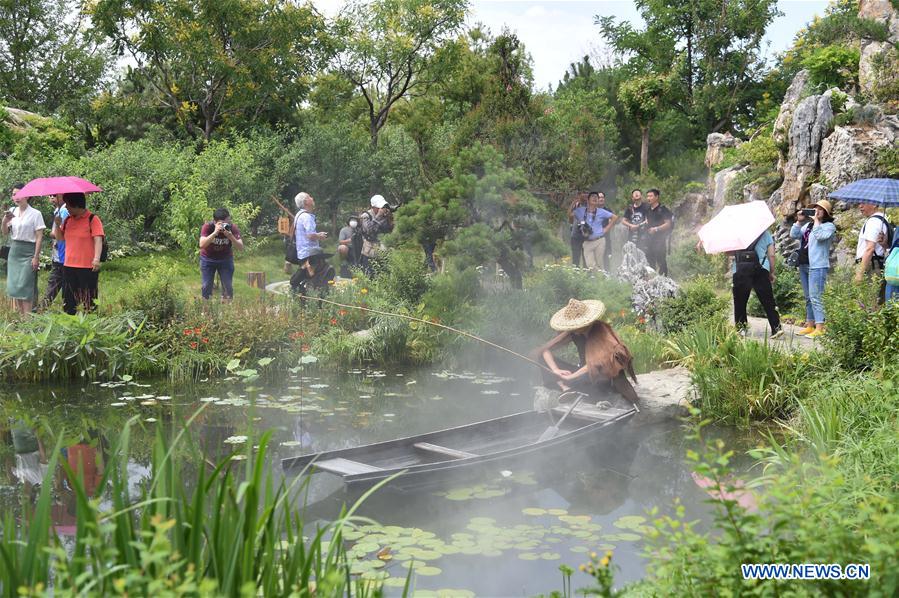
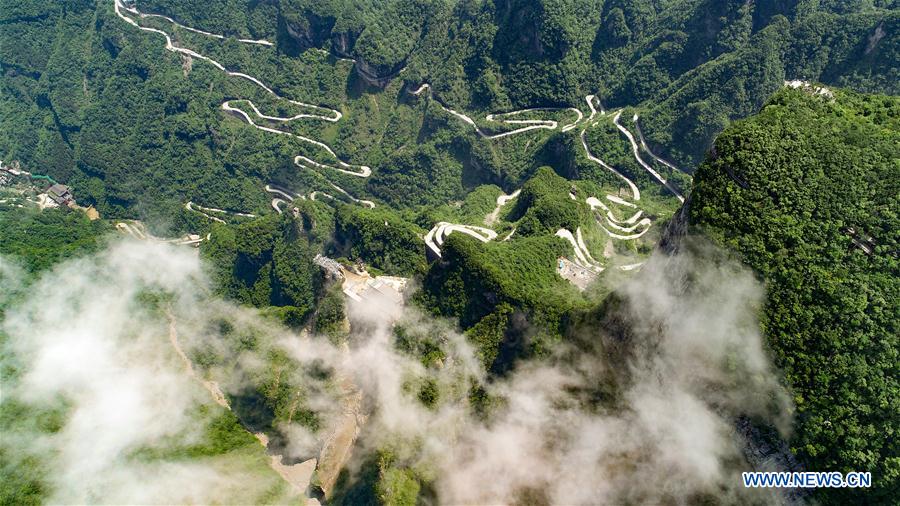
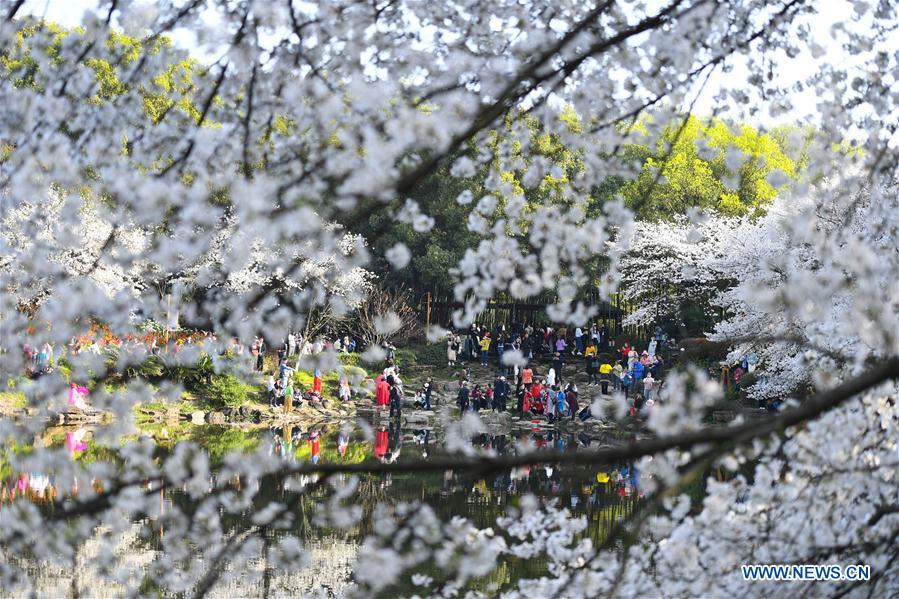
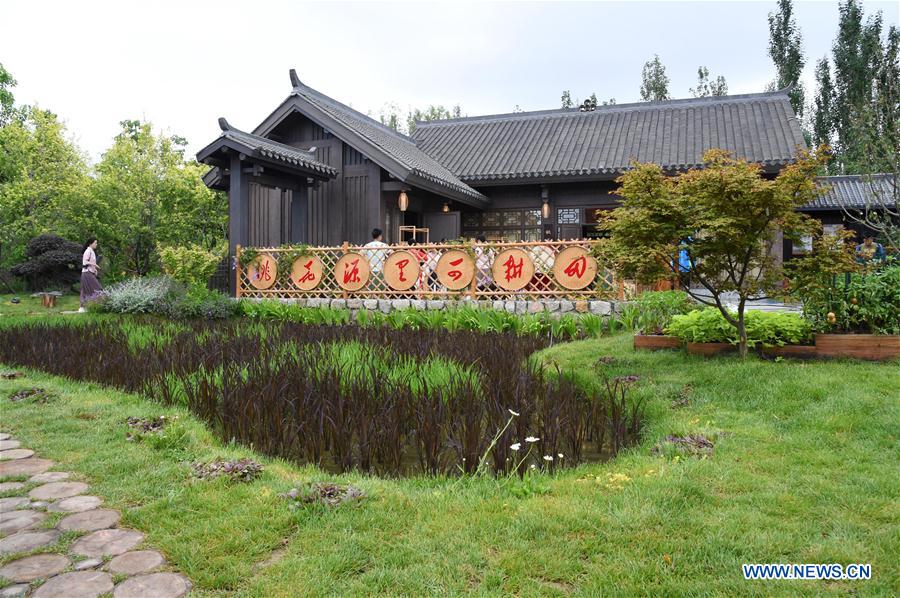
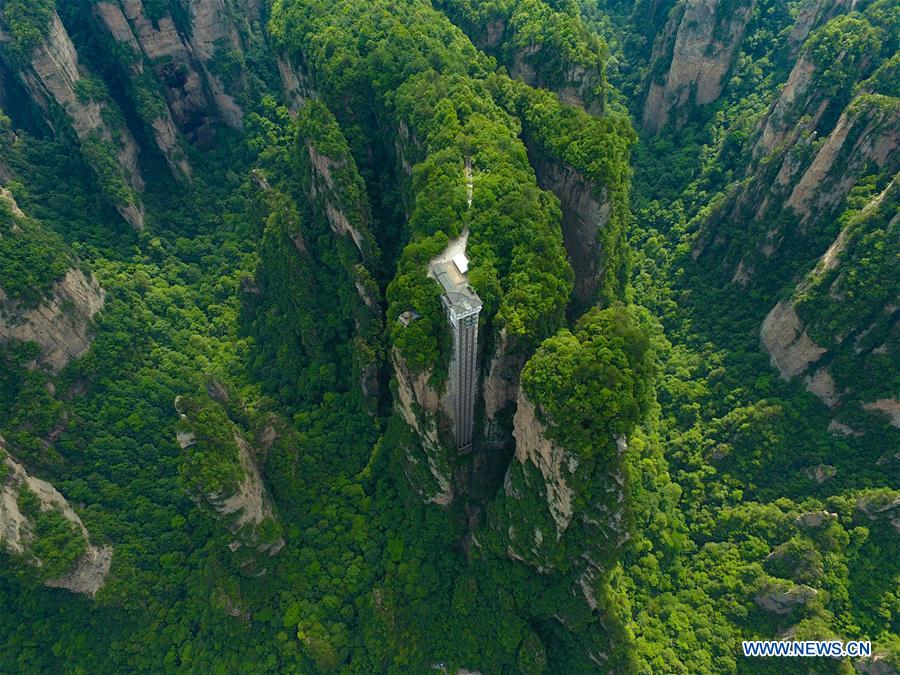
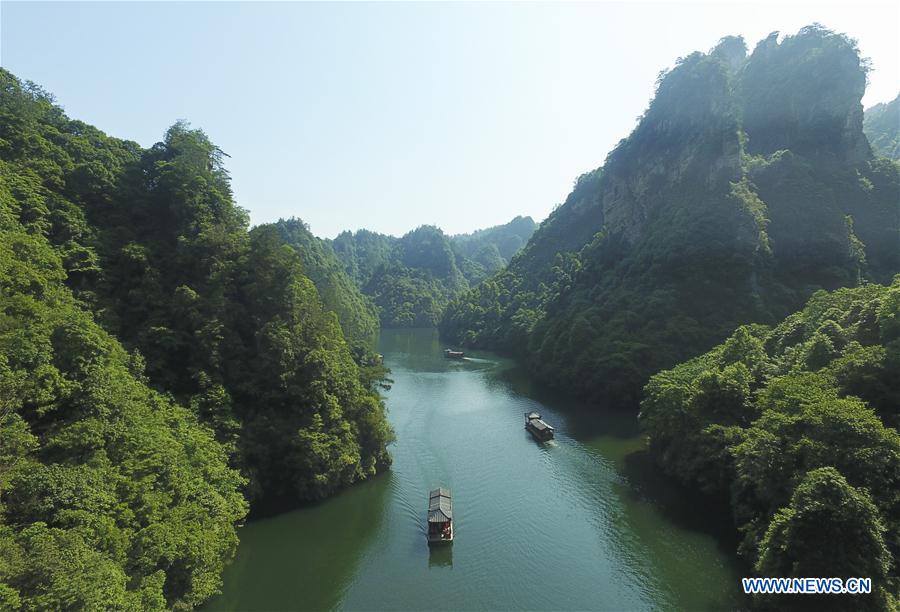
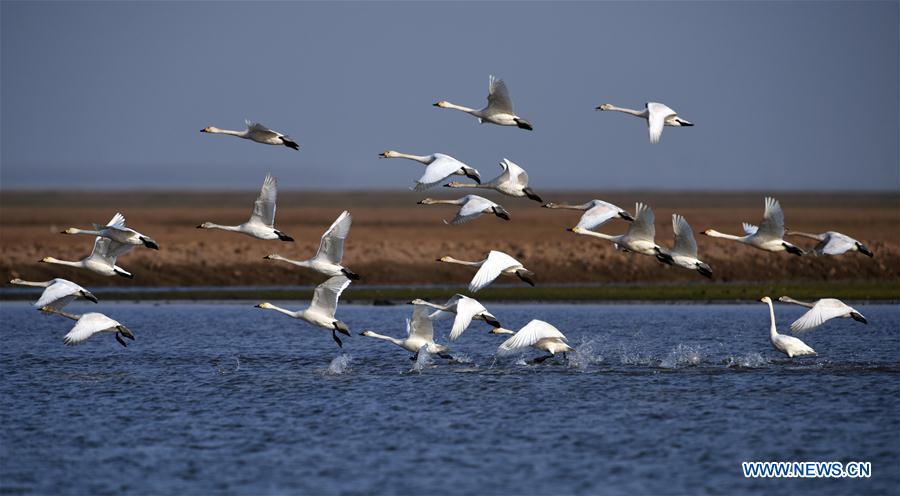
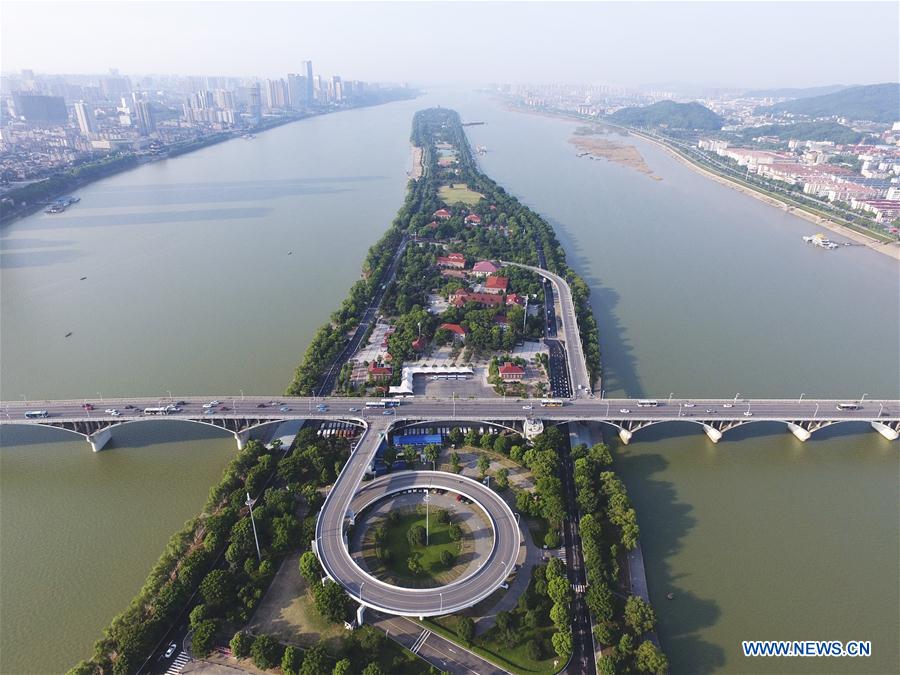
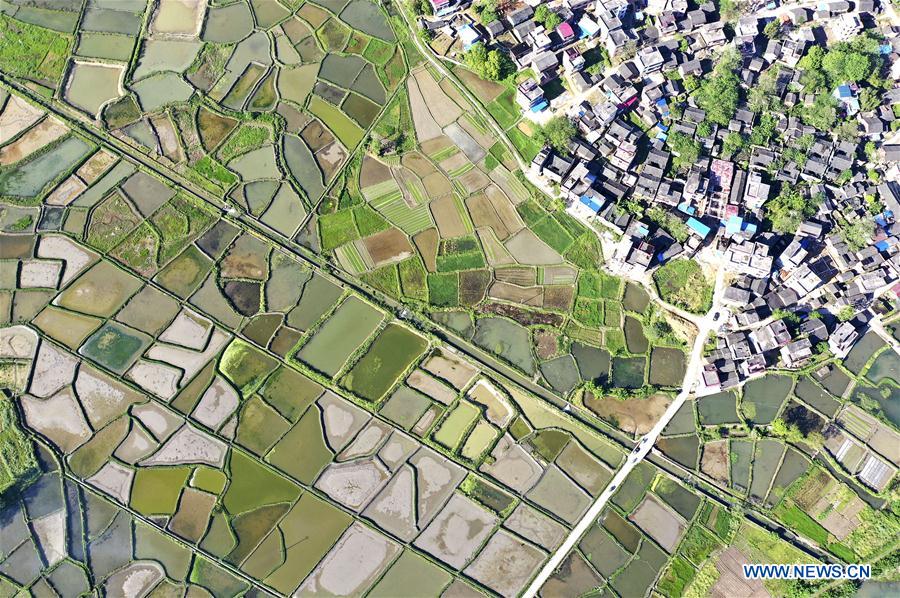
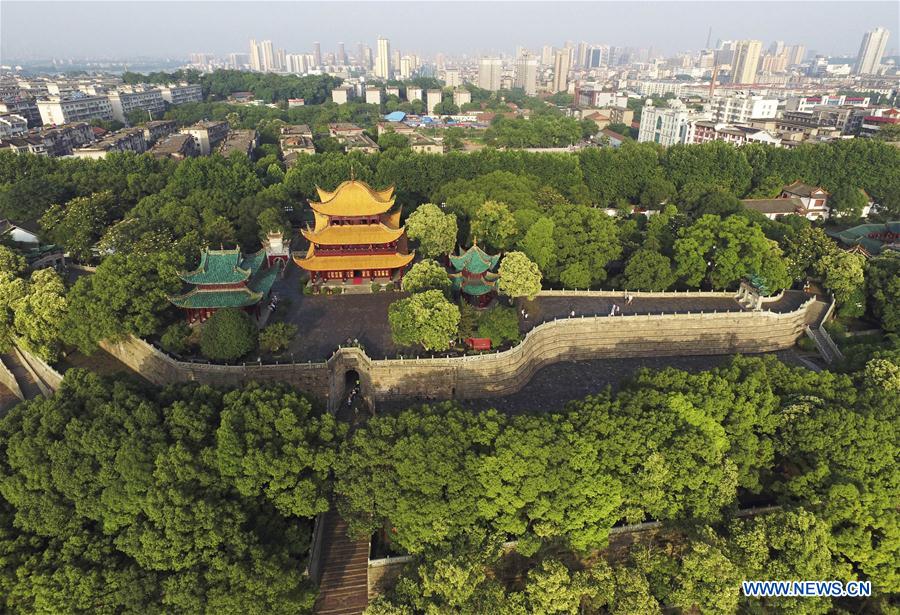
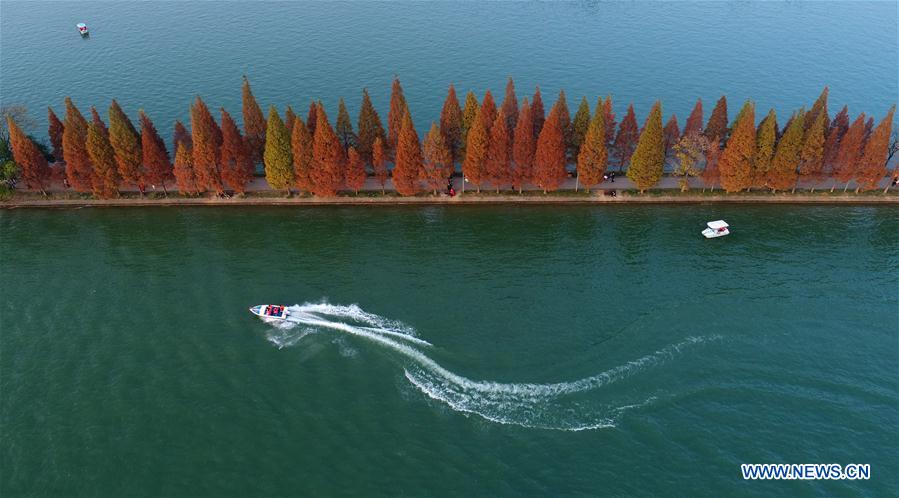
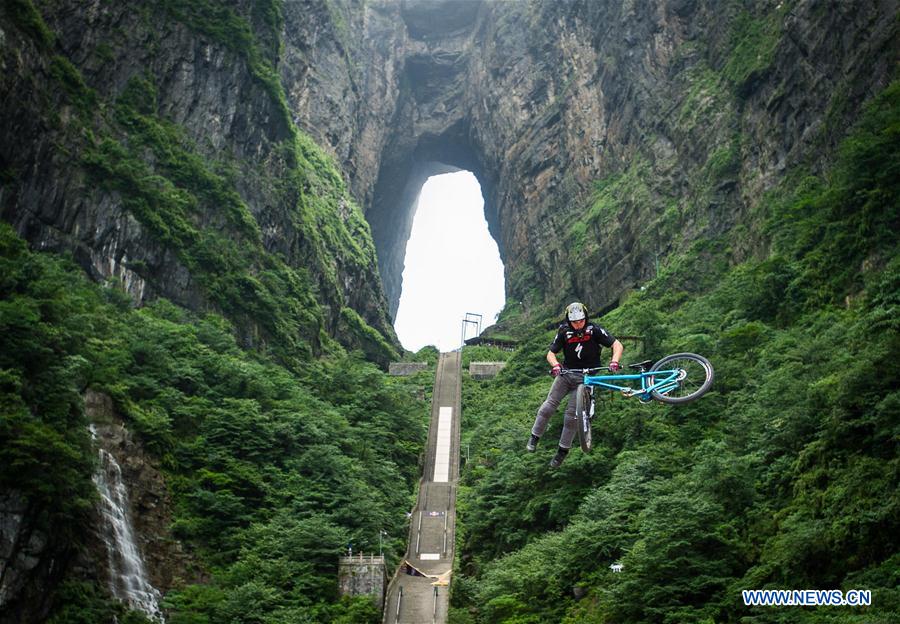
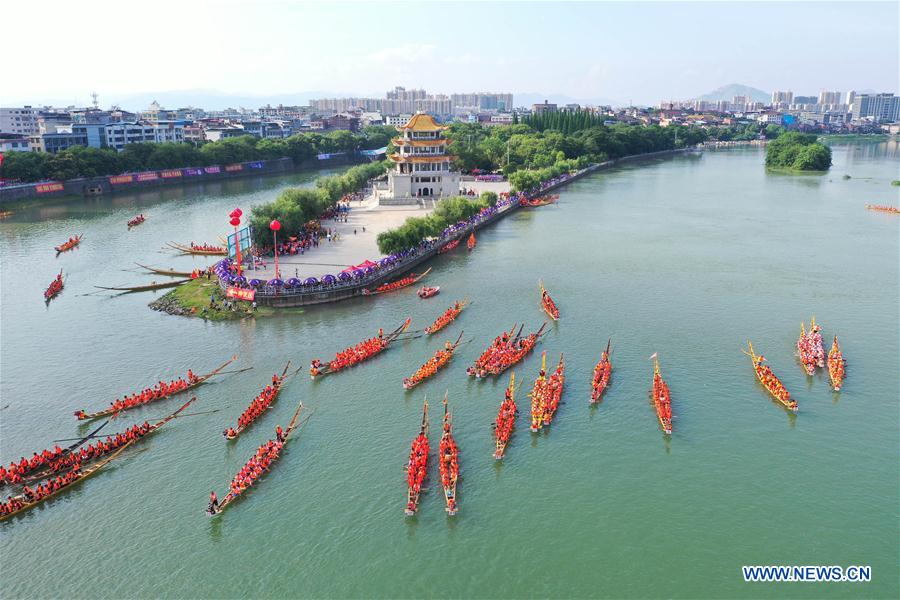
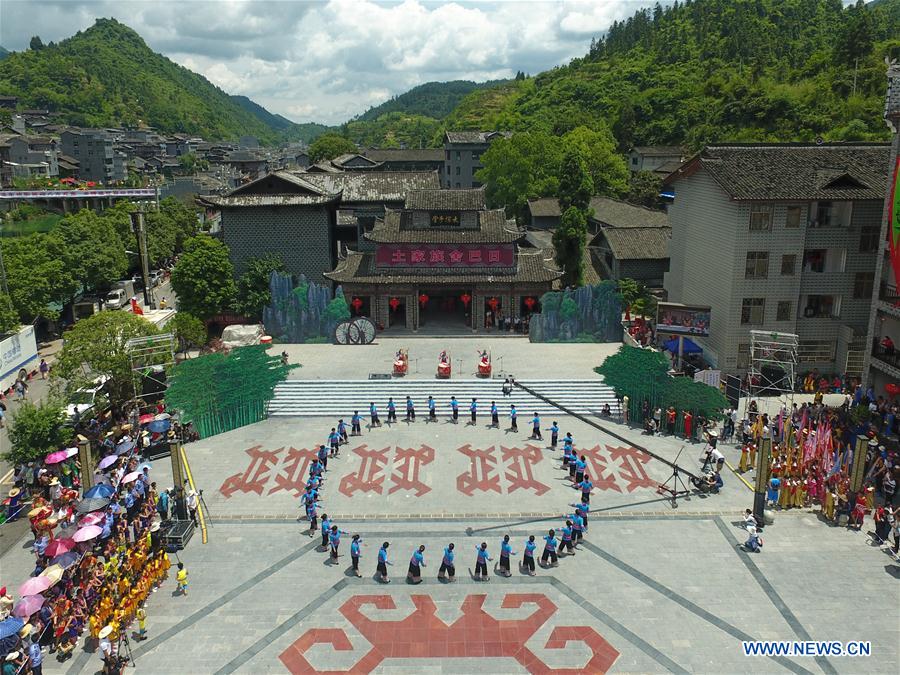
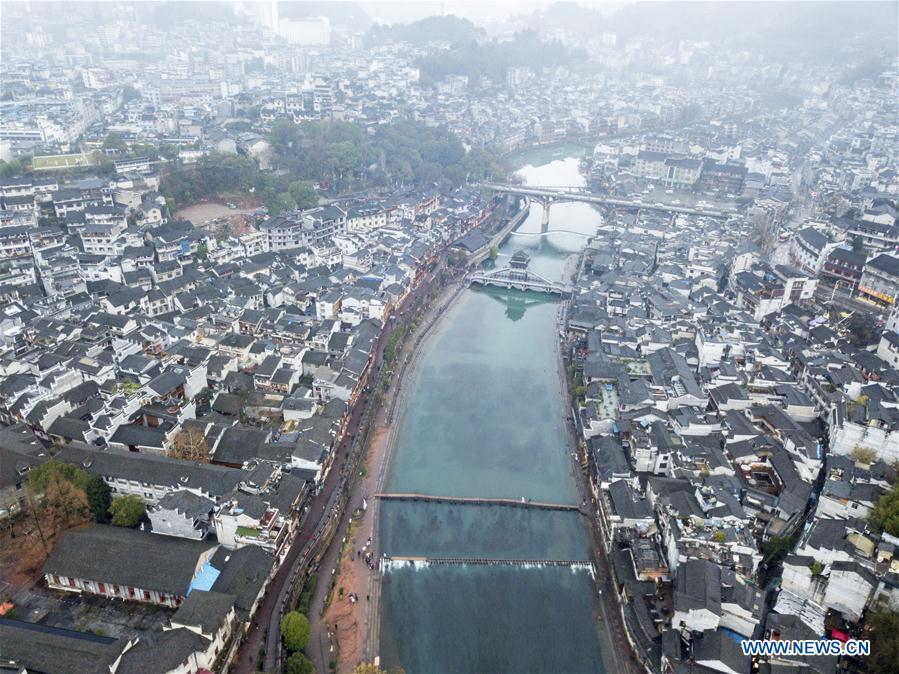
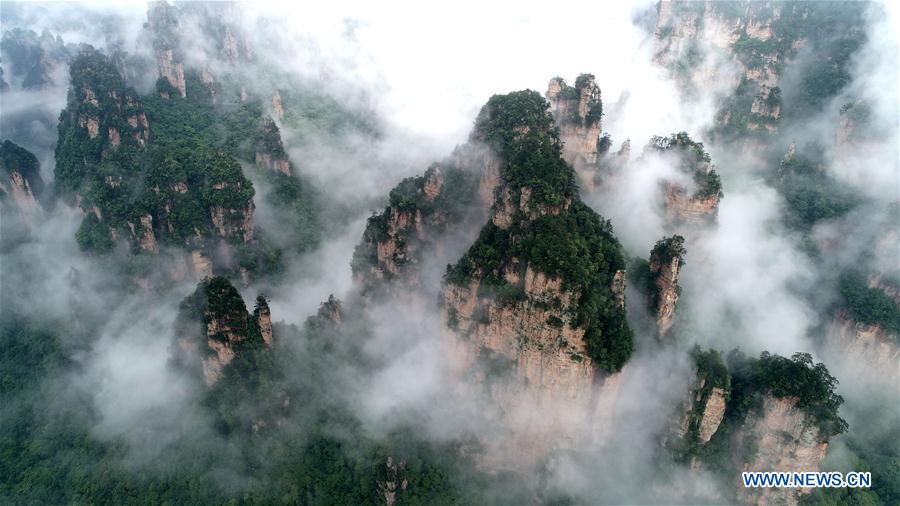
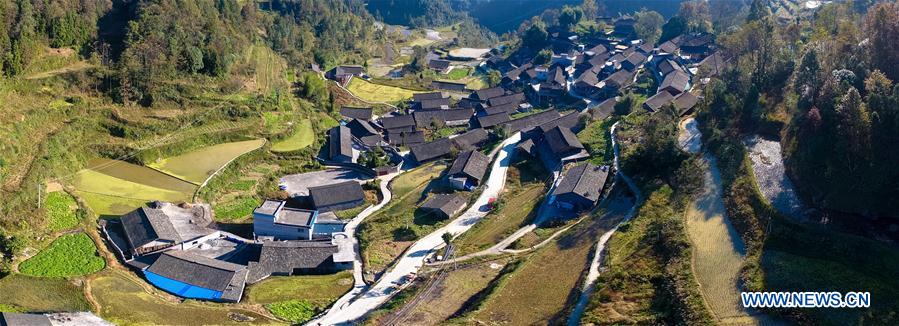
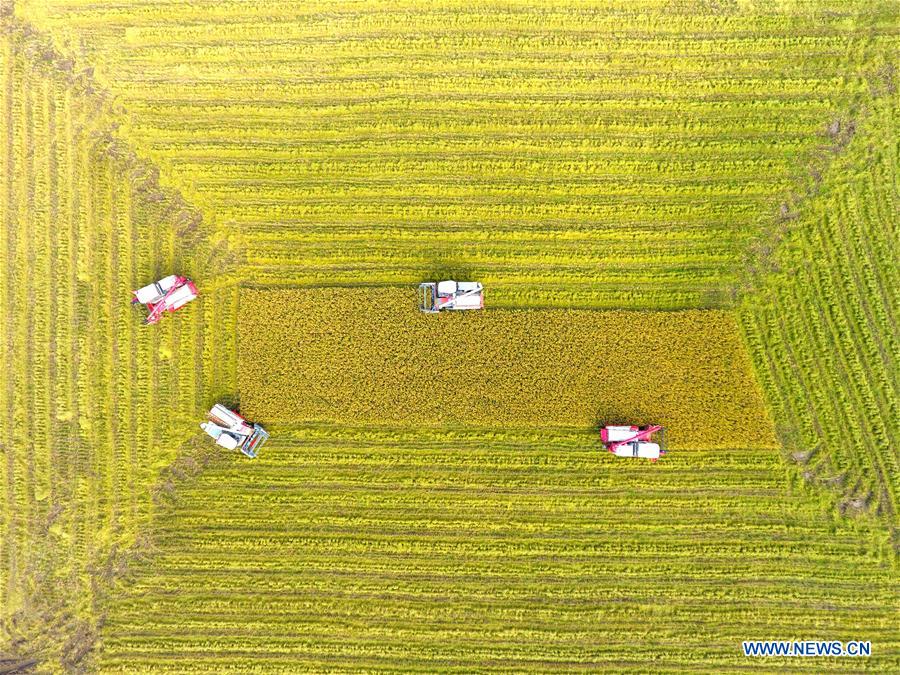
Green development becomes highlight of Hunan Province
Editor:李莎宁
Source:Xinhua
Updated:2019-07-09 09:35:16
Source:Xinhua
Updated:2019-07-09 09:35:16
Special
Contact
Welcome to English Channel! Any suggestion, welcome.Tel:0731-82965627
lisl@rednet.cn
zhouqian@rednet.cn




